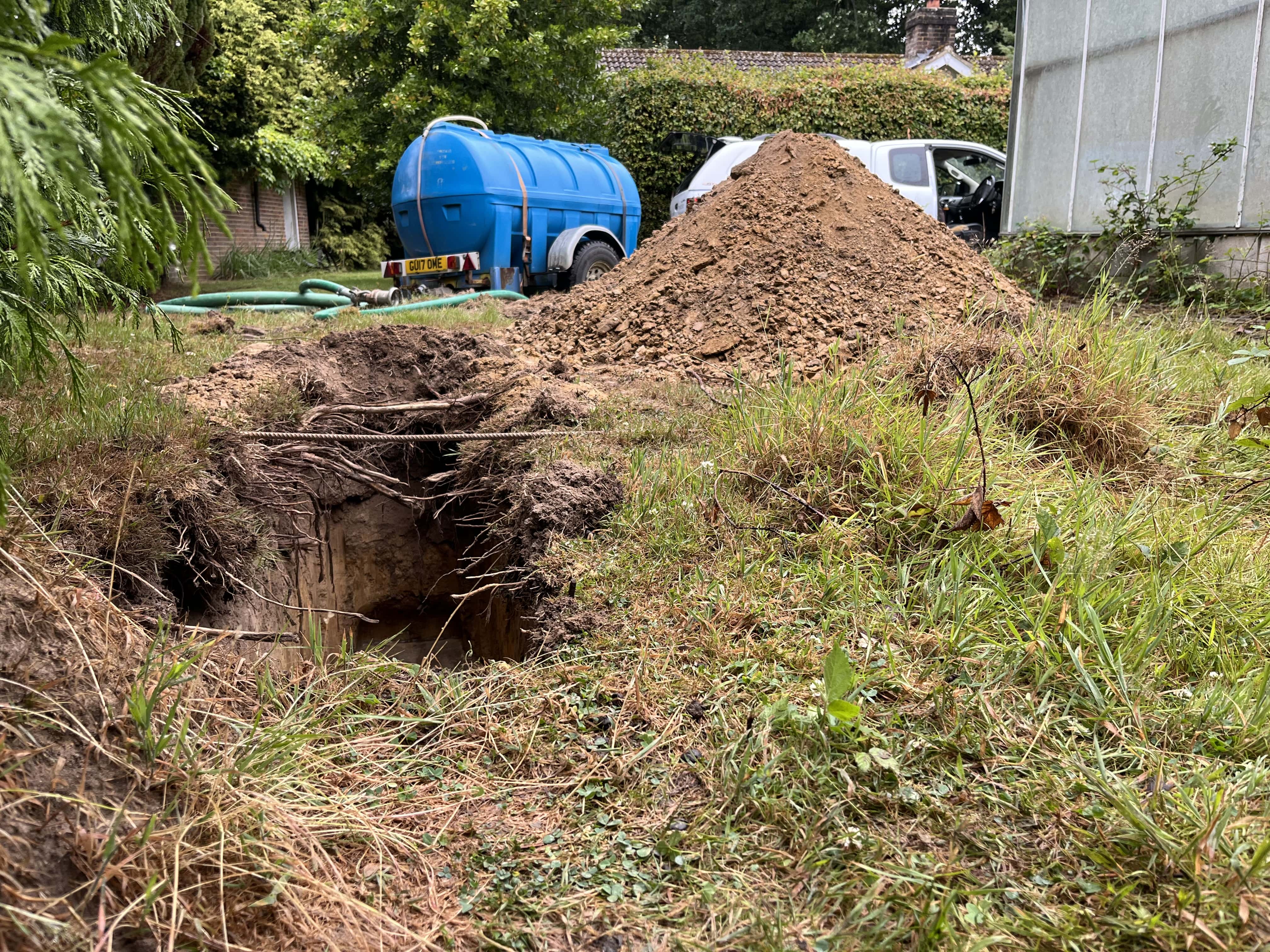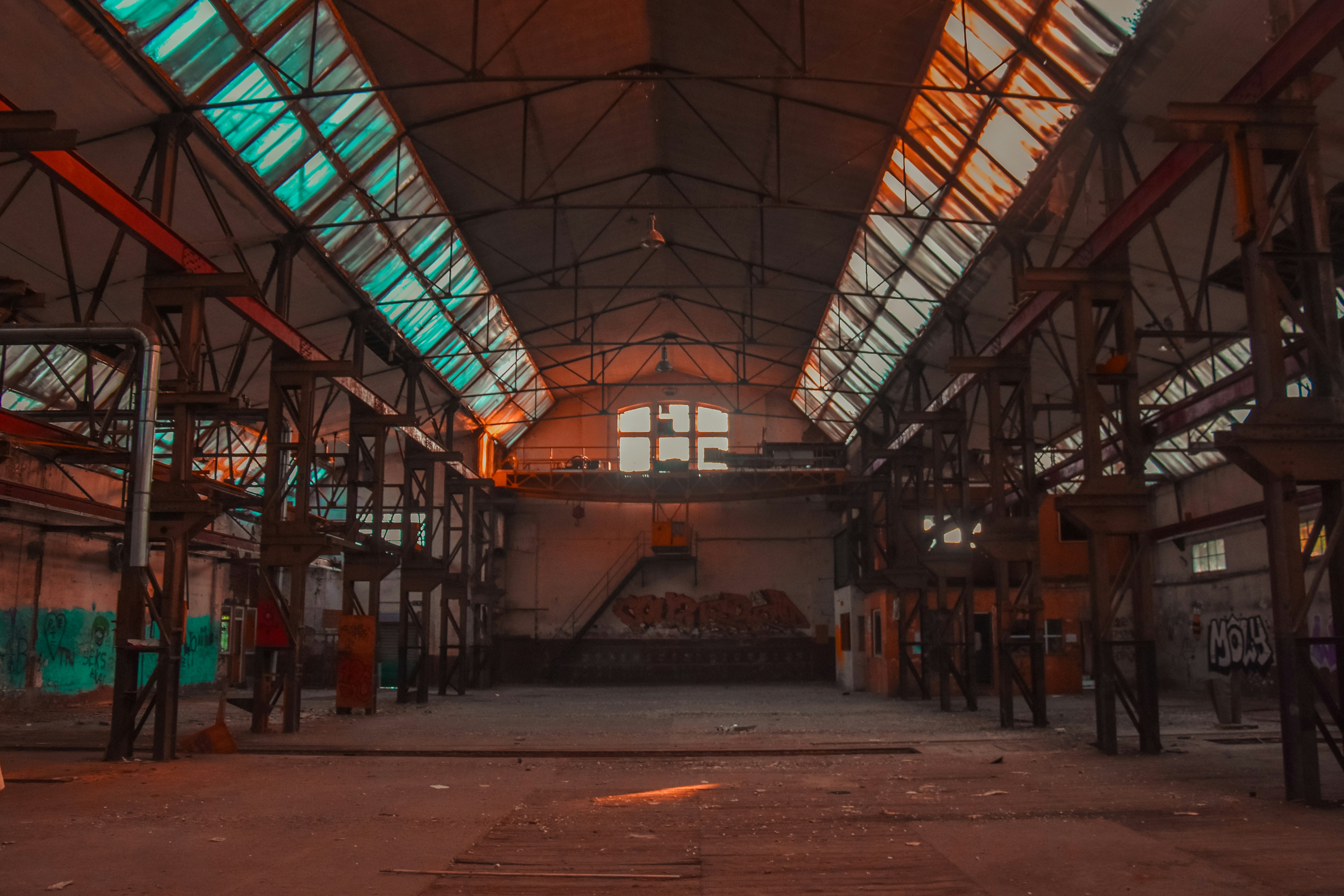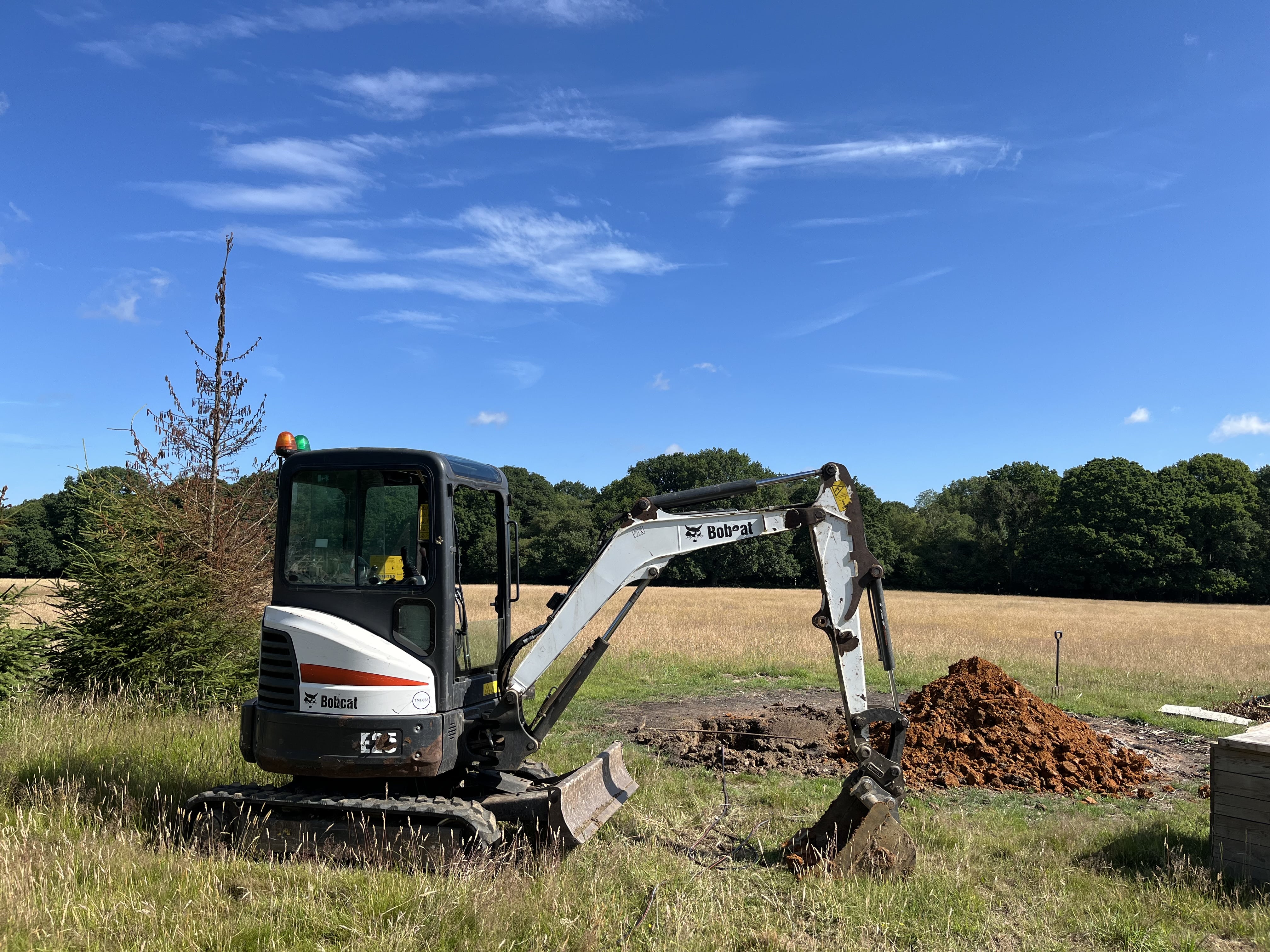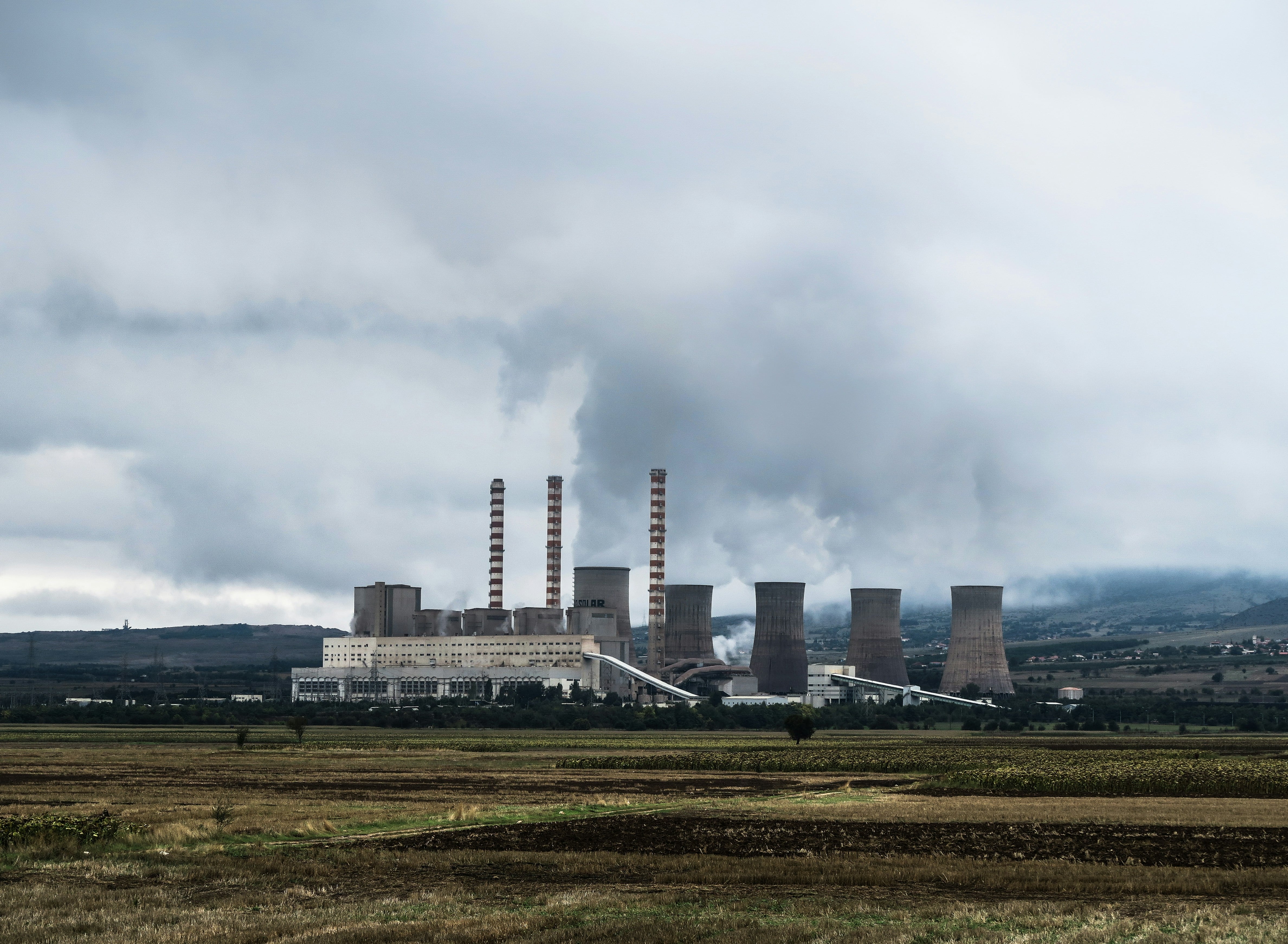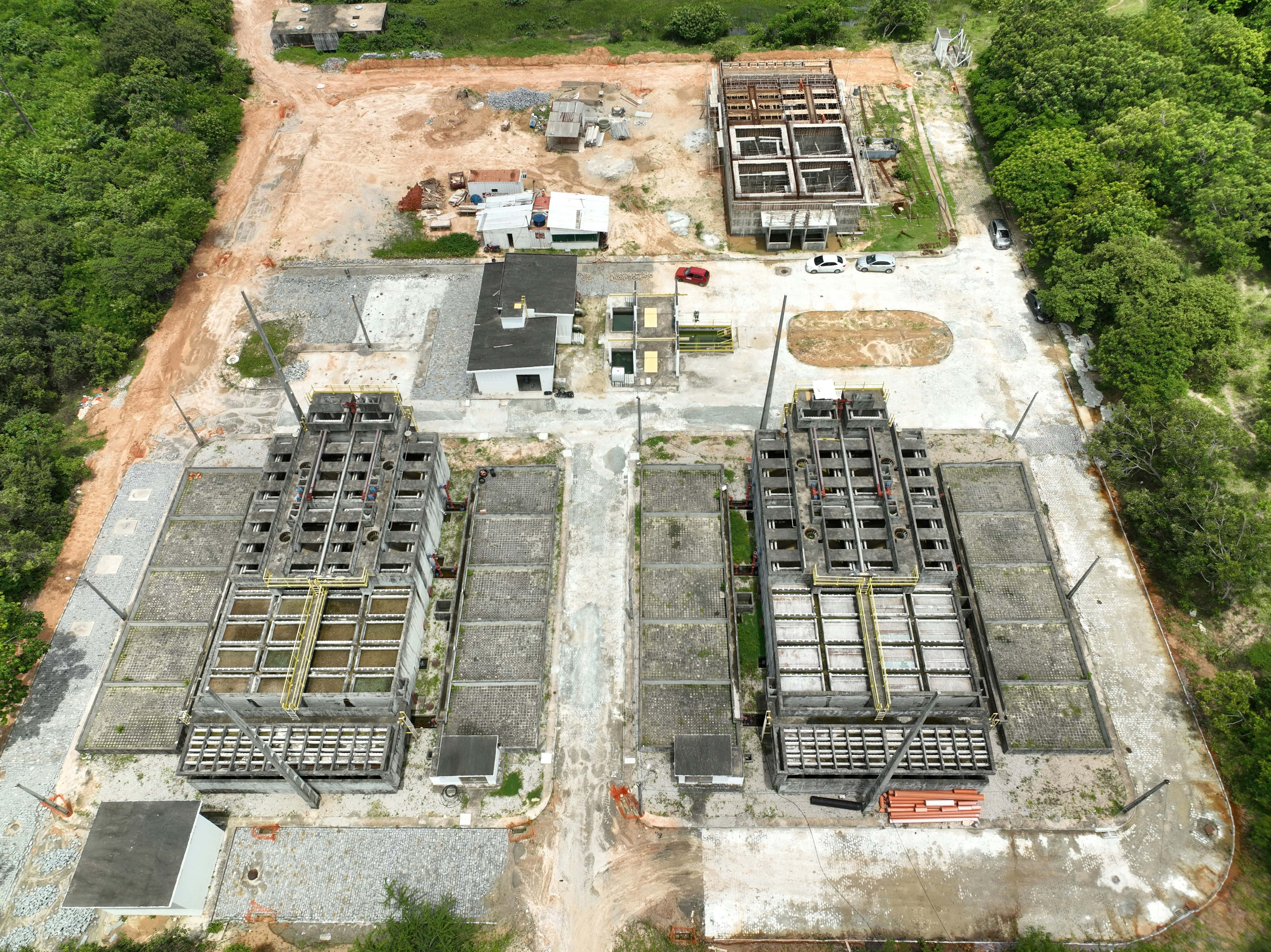Understanding UK Contaminated Land Regulations: A Guide for Developers

Redeveloping brownfield land is a major opportunity in the UK property market but it comes with responsibilities. For developers, one of the most important is understanding and complying with the UK’s contaminated land regulations.
At Clear Environmental, we believe that navigating these rules shouldn’t be a barrier to progress. We are here to provide the right advice early in the planning process to allow contaminated land to be managed confidently, turning potential legacy issues, risks and liabilties into commercial potential.
In this guide, we break down the key regulatory frameworks, what they mean in practice, and how developers can stay compliant while protecting their investment.
Two Routes to Compliance: Planning System vs Part 2A
Contaminated land in the UK is managed primarily through two regulatory frameworks:
- The Planning System – the main route for dealing with contamination during development.
- Part 2A of the Environmental Protection Act 1990 – a legal regime for sites not addressed through planning.
The Planning System: Your Primary Route
Contamination is a material consideration in planning decisions. The National Planning Policy Framework (NPPF) makes clear that new developments must be “suitable for their intended use” and safe from contamination. Local planning authorities (LPAs) will therefore require developers to assess and, where necessary, remediate any contamination risk before permission is granted or development begins.
This proactive route benefits both the public and developers it allows issues to be resolved early, avoids surprises, and makes brownfield land safe and usable.
Part 2A: The Legal Safety Net
Part 2A is used when sites fall through the cracks of the planning system. If land is found to pose a “significant possibility of significant harm”, it can be legally designated as “Contaminated Land.” In such cases, the council (or the Environment Agency for more sensitive sites) can force remediation and assign liability.
The “polluter pays” principle applies. But if the original polluter no longer exists, the current landowner or occupier may be held responsible. That’s why robust due diligence before acquisition is essential.
Thankfully, Part 2A is rarely used. Most issues are resolved through planning, using private investment to remediate land as part of redevelopment.
What Developers Need to Do: Step by Step
Under the planning system, most LPAs expect a phased approach to assessing and managing contamination:
1. Phase 1 Desk Study
This is your first line of defence. A Phase 1 (or Preliminary Risk Assessment) compiles historical land use data, maps, site walkover observations, and environmental records. It identifies potential sources of contamination and helps determine whether further investigation is needed.
A well prepared Phase 1 report shows the council you’re taking the issue seriously and helps avoid unnecessary conditions or delays.
2. Phase 2 Site Investigation
If the Phase 1 identifies potential pollutant linkages and contamination which could be of concern, intrusive investigation follows. This can involve soil and groundwater sampling, along with ground gas monitoring where requried.
It's important to note that the scope of any Phase 2 Site Investigation should be based off the results of the Phase 1. This will ensure that potential contaminants of concern identified within the Phase 1 are targeted, both spatially and chemically. As such, a robust Phase 1 can help limit the scope of any Phase 2 Site Investigation, therefore limiting cost and timescales. Conversely, a well informed Phase 1 ensures that the correct areas of the site and contaminants are tested for, ensuring regulatory compliance and limiting delays associated with discharging Contaminated Land planning conditions.
3. Remediation Strategy
If risks are confirmed, a remediation strategy is needed. This may include:
- Soil excavation and disposal
- Groundwater treatment
- Gas protection measures
- Capping or containment
- In situ biological or chemical treatment
Your plan must be reviewed and approved by the LPA before works begin.
4. Verification (Validation) Report
After remediation, a verification report proves the work was done properly and that the site is now suitable for use. Only once this is submitted and accepted can planning conditions be discharged and development proceed.
Part 2A: Why It Still Matters to Developers
Even if your site is being redeveloped through the planning system, understanding Part 2A of the Environmental Protection Act 1990 is crucial especially before acquiring land with a potentially industrial past.
Under Part 2A, if land is determined to be “Contaminated Land” because it poses a significant risk to human health or the environment, the local authority (or the Environment Agency in certain cases) must ensure it is remediated. But who pays?
Liability: Who’s Responsible?
The law defines two classes of liable parties:
- Class A Persons – These are the individuals or organisations who caused or knowingly permitted the contamination. Typically, this includes historic industrial operators who discharged pollutants into the ground or water. If a Class A party can be identified (e.g. a former chemical works), they will be the first port of call for enforcement.
- Class B Persons – If no Class A person can be found say, the original polluter no longer exists or can’t be traced then the liability shifts to the current owners or occupiers of the land. This is where many developers are caught out. If you acquire a site with undiscovered contamination, and no polluter can be pursued, you may become responsible for remediation, even if you had nothing to do with the pollution.
There are some legal defences available. For example, if you bought the site in good faith, carried out proper due diligence (such as a Phase 1 Environmental Assessment), and had no reason to suspect contamination, you may be exempt. However, the bar is high, and liability can still fall on the landowner in many cases.
Developers must conduct thorough environmental checks before purchasing land. It’s not just good practice it protects you from being held legally responsible for someone else’s mess.
Guidance, Standards, and What Your Consultants Should Follow
Your environmental consultant should work in line with key UK standards and guidance, including:
- Land Contamination Risk Management (LCRM) – the Environment Agency’s framework for risk based assessments
- Planning Practice Guidance (PPG) – detail on implementing NPPF policies
- British Standards – including BS 10175 for site investigation and BS 8485 for ground gas mitigation
- NHBC Guidance – relevant technical standards for residential developments on brownfield land
- Society of Brownfield Risk Assessment (SoBRA) – guidance and technical papers for risk assessment professionals
- CIRIA reports – industry guidance for best practice
- CL:AIRE Guidance – best practice bulletins, technical guidance, and tools for managing land contamination and remediation, including the Definition of Waste Code of Practice (DoW CoP)
Following these ensures reports are robust, conditions can be cleared, and you stay on the right side of regulators.
Cost, Timelines, and Incentives
Dealing with contamination adds time and cost but doing it right pays off.
Timelines:
- Phase 1: 10 days as standard, with expedited rapid reporting available
- Phase 2: 4–8 weeks (including lab testing)
- Ground gas monitoring: 4–6 weeks minimum
- Remediation strategy: Can be prepared in as little as 5 days for simple sites; timescales for implementation vary depending on complexity and regulator input
- Verification reporting: Often 1–2 weeks post remediation
Costs vary massively from £1,250 for basic assessments to six figure sums for major remediation.
But developers have access to Land Remediation Relief (LRR)-a generous tax incentive allowing 150% of qualifying remediation costs to be offset against Corporation Tax. Other tools include:
- Environmental insurance
- Grants or loans (occasionally available through local or national schemes)
- Contractual protections on land acquisition
Final Thoughts: From Risk to Opportunity
Contaminated land can seem daunting but it’s part and parcel of brownfield redevelopment. With the right advice, proactive investigations, and clear remediation strategies, it becomes just another project component to manage.
In fact, when handled well, it can be a value add:
- Lower land acquisition costs
- Access to tax reliefs
- Improved site reputation
At Clear Environmental, we help developers unlock the value of brownfield land safely, responsibly, and efficiently.
Need support with a contaminated site?
Get in touch with Clear Environmental for expert advice, practical solutions, and commercially driven environmental risk assessments.
When a Phase 1 Desk Study identifies potential environmental risks, the next step is a Phase 2 Site Investigation, also called an intrusive investigation. This critical stage gathers real-world data to confirm or rule out contamination, protecting your project from unforeseen costs, planning delays, or environmental liabilities.
In this guide, we break down:
- How Phase 2 builds on Phase 1.
- The different investigation techniques (and when to use each).
- Typical timescales.
- How laboratory testing refines the site’s risk profile.
- What to expect at the end of a Phase 2 investigation.
How Phase 2 Builds on Phase 1
While a Phase 1 is based on desk research and a site walkover, a Phase 2 collects physical evidence through soil, groundwater, and ground gas sampling.
In short:
Phase 1 = Identify Potential Risks.
Phase 2 = Confirm or Dismiss Risks with Hard Data.
The findings from Phase 2 enable:
- Quantitative Risk Assessments (QRA) based on actual contamination levels.
- Decisions about whether remediation is necessary.
- Planning condition discharge if no unacceptable risks are found.
Phase 2 Site Investigation Methods
Different methods are used depending on the site, the anticipated risks, and the required depth of investigation:
- Best For: Shallow contamination, made ground assessment, visual soil profiling, locating foundations.
- Typical Depths: Up to 4 metres.
- Equipment: Mechanical excavator or hand-dug.
- Best For: Shallow contamination, installation of ground gas and groundwater wells, restricted access sites, cost-effective sampling.
- Typical Depths: Generally 5–6 metres, but can extend up to 10 metres depending on ground conditions.
- Equipment: Window sampling rig (tracked or towed).
- Best For: Deeper soils, groundwater sampling, ground gas monitoring, and collecting geotechnical data.
- Typical Depths: Up to 30 metres or more.
- Equipment: Cable percussion drilling rig.
- Best For: Hard ground, bedrock investigations, and installation of deep groundwater wells.
- Typical Depths: Up to 100 metres or more.
- Equipment: Rotary drilling rig (open hole, cored, or augered).
Tip: On smaller development sites, a combination of trial pits and window sampling often provides excellent coverage at a cost-effective price.
Types of Laboratory Testing During Phase 2
After sampling, the materials collected are sent for laboratory analysis to determine contamination levels:
- Soil Testing:
- Heavy metals (e.g., lead, arsenic)
- Hydrocarbons (TPH, PAHs)
- Asbestos in soil
- Emerging contaminants (e.g., PFAS)
- Groundwater Testing:
- Soluble contaminants (e.g., hydrocarbons, BTEX, solvents)
- Metals in solution
- PFAS detection
- Ground Gas Monitoring:
- Methane, carbon dioxide, oxygen concentrations
- Flow rates (for CS classification)
The results are then compared against appropriate assessment criteria to determine whether remediation is needed.
What Happens After Phase 2 Sampling?
1. Data Analysis and Quantitative Risk Assessment (QRA):
Risk to human health, controlled waters, or property assessed.
2. Conceptual Site Model Update:
Confirmed pollutant linkages mapped and risk-ranked.
3. Decision Point:
No significant risks: Reporting and planning condition discharge.
Significant risks: Recommend remediation (Phase 3).
Phase 1 vs Phase 2 - Quick Comparison Table
FAQs About Phase 2 Site Investigations
What happens if contamination is found in a Phase 2?
If contaminants exceed safe levels, a Remediation Strategy (Phase 3) will be needed to outline how risks will be managed.
Can a Site Investigations rule out the need for remediation?
Yes. Many sites require no further action after a properly scoped Phase 2 investigation.
Is ground gas monitoring always required during a Phase 2?
Not always. It depends on the site's history, geology, and desk study findings.
Why a Clear Phase 2 Strategy Matters
A well-designed Phase 2 Site Investigation provides confidence, clarity, and control.
It ensures you're fully informed about site risks, avoids unnecessary remediation, and moves your project efficiently through planning.
At Clear Environmental, we tailor Phase 2 investigations to your site. No over-scoping, no hidden costs, just clear advice.
If your Phase 2 results raise concerns, understanding how to move forward with proportional, commercially realistic remediation is crucial.
To learn what happens next from Phase 2 to Remediation Click Here.
Related Services
What is a Phase 1 Desk Study (Preliminary Risk Assessment)?
A Phase 1 Desk Study (Preliminary Risk Assessment) is an initial environmental assessment that researches a site’s history and conditions to identify potential contamination risks.
Whether you're planning to develop land, submit a planning application, or purchase a brownfield site, understanding environmental risks early is essential.
A Phase 1 Desk Study (also called a Preliminary Risk Assessment, Contaminated Land Assessment or Land Quality Report) is the first critical step in managing those risks efficiently, helping avoid costly surprises later in your project.
This guide explains exactly what a Phase 1 involves, why it’s required, and what you can expect from the process.
What is a Phase 1 Desk Study?
A Phase 1 Desk Study is a preliminary environmental assessment that evaluates the potential for land contamination based on historical and current land uses.
It is called a “desk study” because it mainly relies on reviewing existing records and data sources, alongside a site visit.
It does not involve any intrusive ground investigation, that's reserved for Phase 2 Site Investigation if risks are identified.
In simple terms:
A Phase 1 identifies if there’s a potential problem — before you commit to site purchase, design, or construction.
Why is a Phase 1 Desk Study Needed?
A Contaminated Land Report is often required to:
- Support planning applications (especially brownfield or previously developed sites).
- Satisfy lender due diligence for property transactions.
- Manage liability and avoid unexpected abnormal costs.
- Confirm if further investigations (Phase 2) are needed.
Without a Phase 1, local authorities, insurers, and funders may refuse to progress development or financing.
Key Components of a Phase 1 Desk Study
A thorough Phase 1 typically includes:
What Does a Phase 1 Report Contain?
A typical Phase 1 Desk Study Report will include:
- Executive Summary (key findings and recommendations).
- Site location and description.
- Historical land use review (maps and aerial photography).
- Environmental setting (geology, hydrology, groundwater).
- Regulatory database review (permits, enforcement notices, pollution incidents).
- Walkover survey findings (including annotated site photos).
- Preliminary Conceptual Site Model (CSM).
- Risk assessment and clear conclusions.
- Next steps, if further investigation is needed.
At Clear Environmental, our Phase 1 reports are concise, commercially-focused, and designed to satisfy planning authorities and lenders without unnecessary complexity.
How Long Does a Phase 1 Desk Study Take?
Most Phase 1 assessments can be completed within 10 Days.
We also offer fast-track services if you’re working to tight planning or transaction deadlines.
Phase 1 Desk Study vs. Environmental Search: What's the Difference?
Key point: An Environmental Search is not a substitute for a Phase 1 — it’s simply a basic desktop screening.
Why Clear Environmental for Your Phase 1?
A Phase 1 Desk Study isn’t just a box-ticking exercise, it’s your first opportunity to manage risks, reduce abnormal development costs, and protect your investment.
At Clear Environmental, we combine technical expertise with commercial insight to deliver Phase 1 Reports that meet planning, legal, and financial requirements quickly and clearly.
Related Services
FAQs About Phase 1 Environmental Desk Studies
When should I commission a Phase 1 Environmental Report?
Ideally before site acquisition or at the earliest planning stage, so risks and costs are identified early.
Will a Phase 1 Desk Study always recommend a Phase 2 Site Investigation?
No — many sites with clean histories and no risk linkages can be signed off at Phase 1.
Who needs a Phase 1 Environmental Desk Study?
Developers, property investors, planners, architects, solicitors, and lenders commonly require Phase 1 studies.
Will the council accept my Phase 1 report for planning?
Yes — provided it follows UK guidance (such as EA Land Contamination Risk Management (LCRM)) and is prepared by qualified specialists.
What happens if my Phase 1 shows contamination risks?
We’ll outline the recommended Phase 2 site investigation scope and cost early, so you remain in control.
FAQs About Contaminated Land Assessments
What is a contaminated land assessment?
A contaminated land assessment identifies whether land poses environmental or health risks, helping manage liabilities before development or purchase.
What is the difference between Phase 1 and Phase 2?
Phase 1 is a desktop and site walkover study identifies potential risks. Phase 2 collects soil, water, and gas samples to confirm actual contamination.
How long does a Phase 1 Environmental Report and Phase 2 Site Investigation take?
A Phase 1 takes 10 days. A Phase 2 takes 4-6 weeks depending on complexity.
What happens if contamination is found during a Site Investigation?
A remediation strategy is developed to remove or manage the risks to acceptable levels.
Do I always need a Phase 2 investigation?
Not always — if Phase 1 finds no significant risks, Phase 2 may not be necessary.
FAQs About Contaminated Land Assessments
What’s a Ground Gas and Vapour Strategy (GGVS)?
A GGVS is a targeted investigation to assess the presence and risk of gases such as methane, carbon dioxide, and vapours. It typically involves installing monitoring wells, conducting several monitoring visits, and using standards like CIRIA C665 and BS8485 to determine whether protection is needed.
Do I need gas monitoring for a small extension in RBKC?
Not necessarily. If the Phase 1 Ground Gas Risk Assessment confirms no credible risk — for example, if the site is underlain by intact London Clay with no Made Ground — monitoring may not be needed. In low-risk situations, RBKC may accept the installation of basic gas protection measures with a verification statement instead.
How long does a ground gas investigation take from start to finish?
The monitoring phase typically requires 3 - 6 visits spread over a few weeks, depending on site complexity and weather pressure conditions. Including report preparation, the whole process can take around 6 - 12 weeks.
Can I reuse historical ground gas data for planning?
Yes — provided the data is recent, reliable, and representative of current conditions. Clear Environmental reviews historic site investigation records early to help reduce costs and avoid unnecessary repeat monitoring.
What happens if gas risks are confirmed?
If gas concentrations exceed safe thresholds, you’ll need to install mitigation measures such as membranes, venting layers, or structural barriers. Clear Environmental will design a practical, proportionate solution and prepare the necessary Remediation and Verification reports.
What should be included in the Ground Gas Verification Report?
The Verification Report must include photographic evidence, product specifications, a signed statement of installation quality, and confirmation that gas protection was installed in accordance with RBKC expectations. For some projects, additional tracer gas testing may be required.


.jpg)
